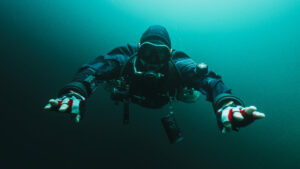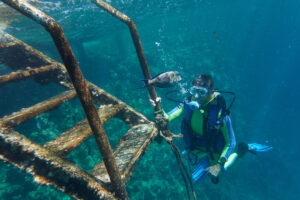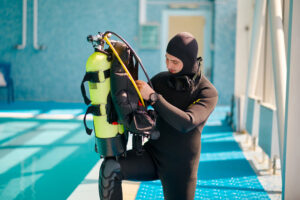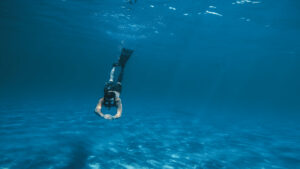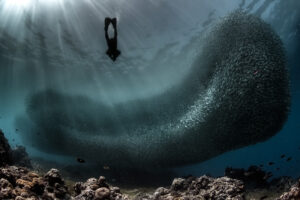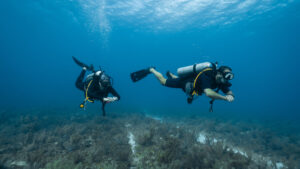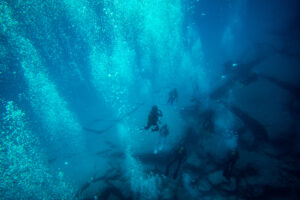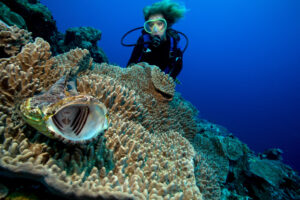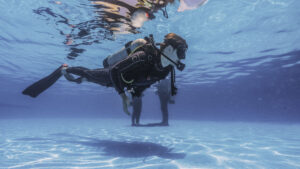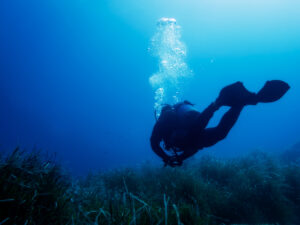What is Recompression when Scuba Diving?
Recompression is a necessary procedure in scuba diving, utilized as a treatment for decompression illness (DCI) or to prevent decompression sickness (DCS). Recompression involves subjecting a diver to pressure after an ascent from a dive. While it is preferably done in a recompression chamber, occasionally in-water recompression may be employed. This entry will provide an in-depth overview of the recompression process, the medical conditions it addresses, and the advantages and risks associated with its use in scuba diving.
Decompression Illness and Decompression Sickness
Decompression illness is a term that encompasses both decompression sickness and arterial gas embolism. Decompression sickness, also known as “the bends,” occurs when nitrogen bubbles form in a diver’s tissues as a result of a rapid reduction in ambient pressure during ascent. These bubbles can cause pain, paralysis, and even death if not treated promptly. Arterial gas embolism, on the other hand, occurs when gas bubbles enter the bloodstream, blocking blood flow to vital organs, including the brain.
Recompression as Treatment
When a diver exhibits symptoms of decompression illness, recompression is considered the primary treatment. Recompression works by increasing the ambient pressure surrounding the diver, which allows the gas bubbles in the body to dissolve more rapidly. The increased pressure reduces the size of the bubbles, relieving symptoms and allowing the dissolved gases to be eliminated from the body through normal respiratory processes.
Recompression Chambers
The preferred method of recompression is through the use of a recompression chamber, also known as a hyperbaric chamber. These chambers are designed to simulate the pressure experienced at specific depths underwater. Divers are placed inside the chamber, and the pressure is increased in a controlled manner, while medical personnel monitor the diver’s condition. Treatment times can vary from several hours to days, depending on the severity of the decompression illness.
The most commonly used recompression treatment table is the U.S. Navy Treatment Table 6, which starts at a pressure equivalent to 60 feet (18 meters) of seawater and progressively decreases the pressure as the treatment progresses. Oxygen is administered to the diver during the treatment to help expedite the elimination of dissolved nitrogen from the body and promote healing.
In-Water Recompression
In-water recompression is an alternative method of treatment that involves returning the diver to a depth where symptoms are relieved, typically between 20 and 30 feet (6 to 9 meters) underwater. The diver breathes from a surface-supplied air or enriched air source, gradually ascending to the surface over an extended period. This method is less controlled than recompression chamber treatment and carries inherent risks, such as drowning or exacerbating decompression illness. As a result, in-water recompression is generally reserved for situations where no recompression chamber is available or when the diver’s life is in immediate danger.
Advantages and Disadvantages of Recompression
Recompression is a crucial treatment for decompression illness, with a high success rate in alleviating symptoms and preventing long-term complications. In many cases, timely recompression can be lifesaving. The use of a recompression chamber provides a controlled environment, allowing medical personnel to monitor the diver’s condition and adjust treatment as needed.
However, recompression also carries risks. The process can be time-consuming, and in some cases, divers may require multiple treatments. Access to a recompression chamber may be limited, particularly in remote locations, which can delay treatment. In-water recompression, while useful as a last resort, carries additional risks, such as drowning or further injury.
Prevention
Preventing decompression illness is preferable to treating it. Divers should follow safe diving practices, including adhering to established dive profiles, ascending slowly, and performing safety stops. Proper dive planning, which takes into account dive depth, duration, and gas mixtures, is essential to minimize the risk of decompression illness. Utilizing dive computers to monitor dive profiles and remaining within no-decompression limits can also help reduce the risk.
Divers should also maintain good physical fitness, stay well-hydrated, and avoid diving when overly tired or ill. Avoiding alcohol and other substances that can affect a diver’s physical and cognitive abilities is equally important. Divers should also receive appropriate training in decompression diving and be prepared to recognize the signs and symptoms of decompression illness.
Recompression is an essential component of scuba diving safety, serving as the primary treatment for decompression illness and helping to prevent decompression sickness. Recompression chambers offer a controlled environment for treatment, while in-water recompression serves as a last resort when access to a chamber is not possible. Although recompression carries some risks, its benefits in the treatment of decompression illness are significant, with many divers making full recoveries when treated promptly.
Prevention remains the most effective strategy in combating decompression illness, with proper dive planning, adherence to safe diving practices, and maintaining good physical fitness among the best preventive measures. By staying vigilant and informed, divers can minimize the risk of decompression illness and ensure a safe and enjoyable diving experience.



